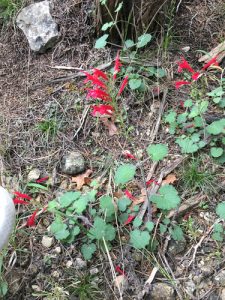I thought I had never seen a dive because I thought all doves have white feathers. The white-winged dove, or Zenaida asiatica, is a dove that is mostly gray with the exception of its white-tipped wings. I have seen this bird multiple times at St. edward’s and had no idea that i was seeing a dove. This bird is native to the southwestern parts of the United States, Mexico, Central America, and the Caribbean. Interestingly, with the rise of urbanization and people with backyard feeders, it has expanded the area in which the white-wing dove ventures. It has migrated as far north as Canada! Such a small, but mighty bird!

http://www.inaturalist.org/observations/5446493








